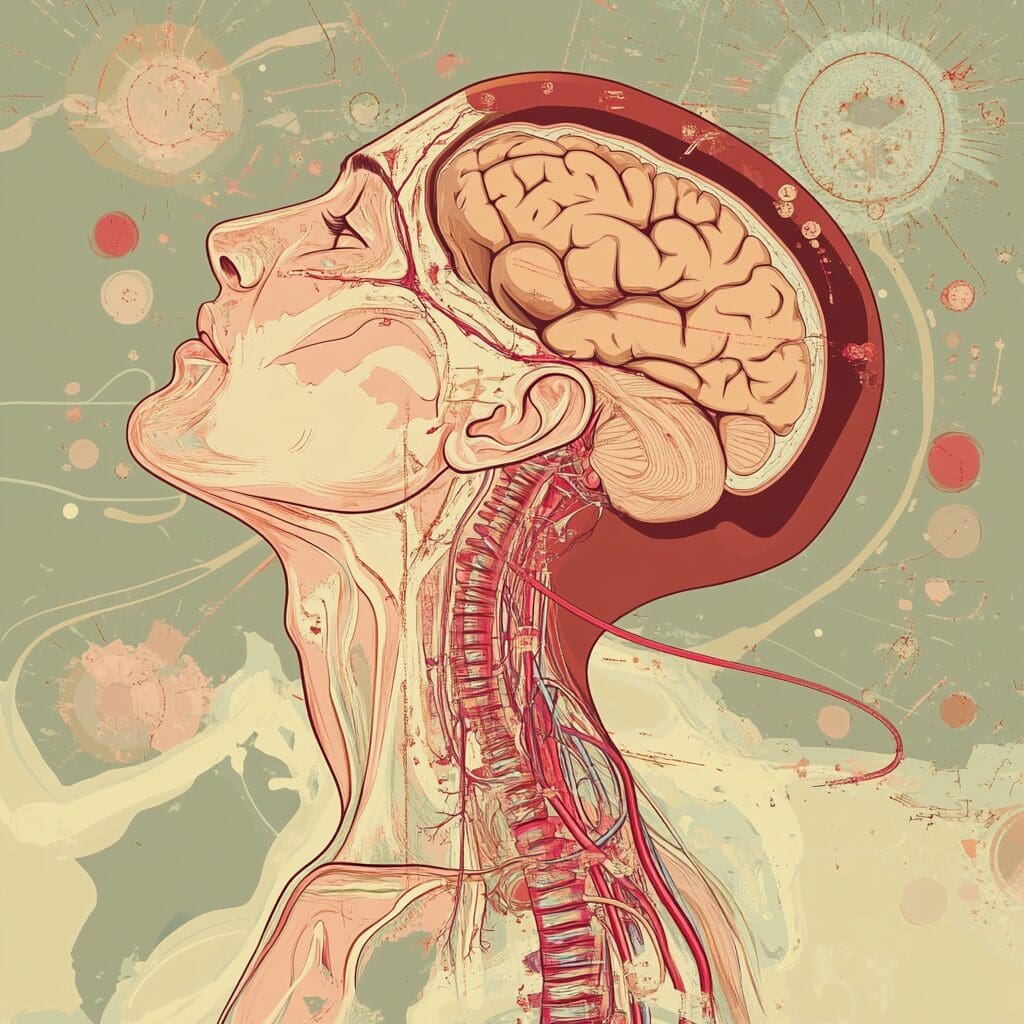When most people think of massage therapy for pain relief, they picture firm pressure, deep kneading, and working out knots. But not all effective therapies require intensity. Craniosacral therapy (CST) is a gentle, hands-on approach that uses light touch—often no more than the weight of a nickel—to release tension deep in the body. While it may appear subtle, its impact on the nervous system and connective tissue can be profound.
If you’re dealing with ongoing pain or discomfort and haven’t found lasting relief, here we will be exploring how it works and five conditions that craniosacral therapy can help support.
How Craniosacral Therapy Works
Craniosacral therapy (CST) is based on the idea that the craniosacral system—which includes the membranes and cerebrospinal fluid surrounding the brain and spinal cord—plays a critical role in overall health and function. When this system becomes restricted due to stress, injury, or chronic tension, it can lead to pain, dysfunction, or nervous system imbalance.
Using light, sustained touch (usually no more than 5 grams of pressure), a trained practitioner gently palpates areas around the head, neck, spine, and sacrum. These subtle adjustments help the body release deep-held tension, improve the flow of cerebrospinal fluid, and restore balance to the nervous system.
Unlike more forceful techniques, CST doesn’t involve manipulation or pressure. It works with the body’s natural rhythms and encourages self-correction, making it especially suitable for people who are sensitive to touch, managing chronic pain, or recovering from trauma.
1. TMJ Disorders and Jaw Pain
If you’ve ever experienced tension in your jaw, clicking or popping when chewing, or dull headaches near your temples, you may be dealing with temporomandibular joint dysfunction (TMJ). This condition can make everyday activities like eating, talking, or sleeping uncomfortable. It may even contribute to neck pain and earaches due to how closely the jaw is connected to surrounding structures.
How craniosacral therapy helps:
CST works by gently releasing restrictions in the cranial bones and the fascia surrounding the temporomandibular joint. Using light intraoral and external techniques, practitioners can ease the pressure on the muscles that control jaw movement.
This often results in improved mobility, reduced clenching, and fewer tension headaches. Because CST also calms the nervous system, it may help reduce the unconscious stress response contributing to jaw clenching and grinding at night.
2. Post-Concussion Symptoms
A concussion, even a mild one, can disrupt neurological function in complex ways. Common post-concussion symptoms include headaches, visual disturbances, balance issues, poor concentration, and fatigue. These symptoms may persist long after the initial injury appears to have healed, often leaving patients frustrated with the slow pace of recovery.
How craniosacral therapy helps:
CST supports the central nervous system by working with the fluid and membranes that protect the brain and spinal cord. After a concussion, subtle changes in fluid dynamics or tension in cranial membranes can create ongoing pressure contributing to symptoms.
CST can help normalize cerebrospinal fluid flow and relieve fascial restrictions around the skull, potentially alleviating symptoms like brain fog and chronic headaches. Additionally, CST’s calming influence on the parasympathetic nervous system may improve sleep and overall energy levels—two key components of brain recovery.

3. Fibromyalgia
Fibromyalgia is a complex condition involving widespread musculoskeletal pain, extreme fatigue, and heightened sensitivity to pressure and sensory input. Many people with fibromyalgia report difficulty sleeping, poor memory, and trouble concentrating—often referred to as “fibro fog.” Standard treatments can be hit or miss; some manual therapies may be too aggressive for sensitive nervous systems.
How craniosacral therapy helps:
Because CST uses such light pressure, it is especially well-suited for individuals with fibromyalgia who cannot tolerate deep tissue massage. The therapy focuses on creating a relaxed state within the body, which can improve autonomic nervous system balance and reduce pain perception.
Some clients experience better quality sleep and increased energy after several sessions. By gently addressing restrictions in the connective tissue system (fascia), CST may help reduce the stiffness and pain associated with fibromyalgia flare-ups, offering relief without overstimulation.
4. Chronic Neck and Back Pain
Chronic pain in the neck or back often involves more than just sore muscles. It may be rooted in structural imbalances, nerve compression, or long-standing postural habits. Even emotional stress can manifest as physical tension in these areas, making the pain both persistent and challenging to treat with conventional methods alone.
How craniosacral therapy helps:
CST aims to resolve pain by identifying and releasing subtle restrictions in the craniosacral system, including the fascia and cerebrospinal fluid that runs from the cranium down the spine to the sacrum. When imbalances in this system are corrected, spinal alignment and muscular tension may improve naturally—without the need for forceful adjustments.
Clients often report a greater range of motion and a lasting sense of ease after CST sessions. This technique is especially useful for those who have tried physical therapy, chiropractic care, or massage but still experience lingering discomfort.
5. Stress-Related Symptoms and Sleep Issues
Stress doesn’t just affect your mood—it often manifests in the body through tension, shallow breathing, digestive upset, irritability, or chronic fatigue. Over time, unaddressed stress can impair immune function and interfere with the body’s healing ability. Sleep disturbances, in particular, are one of the most common and frustrating symptoms of chronic stress.
How craniosacral therapy helps:
One of the most profound effects of CST is its ability to downregulate the nervous system. By engaging the parasympathetic branch (the “rest and digest” mode), CST helps slow the heart rate, deepen breathing, and quiet the mind. This state of deep relaxation can make it easier for the body to repair and recharge.
Many clients report falling into a meditative or dream-like state during sessions and experiencing more restful sleep afterward. Over time, regular CST may help reduce anxiety, improve emotional resilience, and support better digestion and immune response—all of which are negatively affected by chronic stress.

Considering Craniosacral Therapy for Pain Relief?
Craniosacral therapy offers a gentle, noninvasive option for individuals seeking relief from persistent pain and discomfort, especially when traditional approaches have failed. Its ability to work with the nervous system, fascia, and subtle body rhythms uniquely complements other manual therapies.
Suppose you’re exploring new ways to support your body’s healing, especially for conditions like TMJ dysfunction, post-concussion symptoms, fibromyalgia, or chronic neck and back pain. In that case, craniosacral therapy may be worth discussing with a qualified practitioner in your area. Be sure to seek out someone trained in this specific modality, and always ask about their credentials and approach.
FAQ's
Yes. Because it uses very light touch, craniosacral therapy is generally safe for most people, including those with chronic pain, neurological conditions, and sensitivities to deeper pressure.
Some clients notice changes after just one session, while others may benefit from a series over time—especially when addressing long-standing or complex conditions.
Not at all. Most people describe it as relaxing and soothing. During treatment, you may feel subtle movements or warmth but no pain.
Absolutely. CST is often used alongside massage therapy, osteopathy, acupuncture, and counselling. At The Healing Oak, we create personalized care plans to suit your needs.
If your plan includes Registered Massage Therapy (RMT), sessions with our CST-trained massage therapists may be eligible for direct billing. Check with your provider for coverage details.

